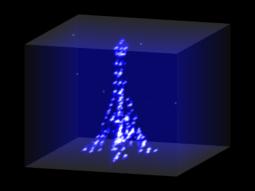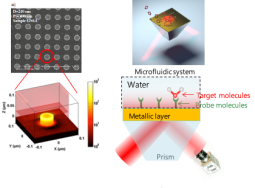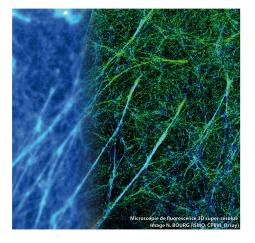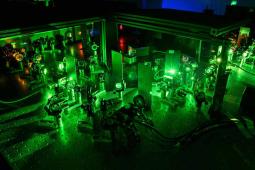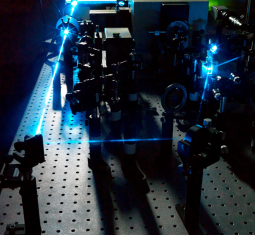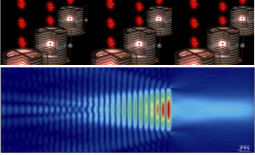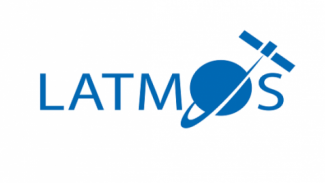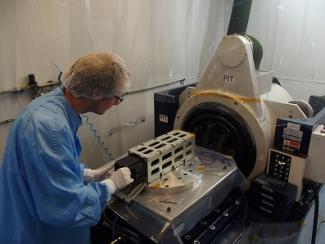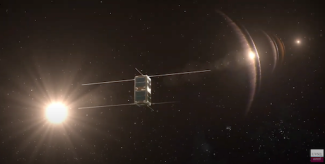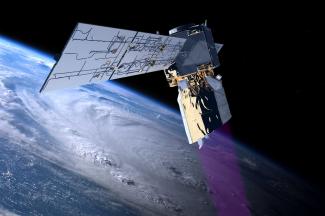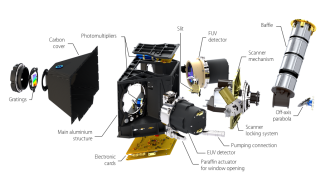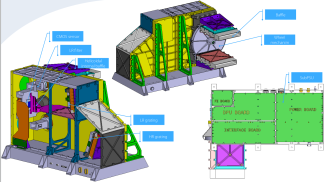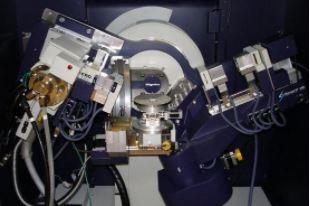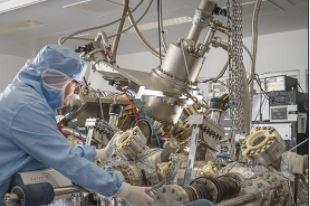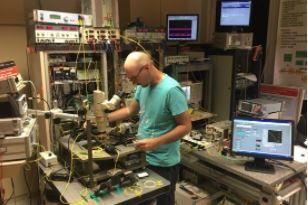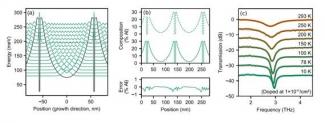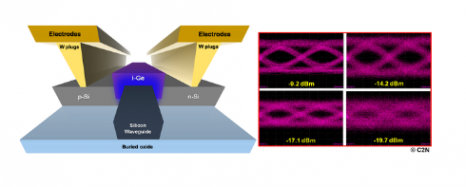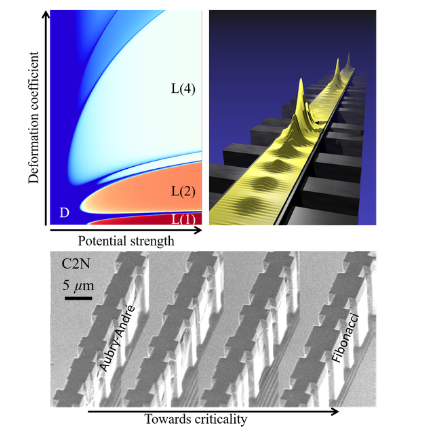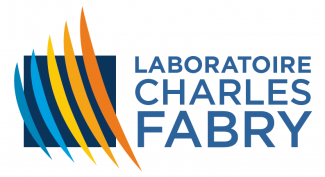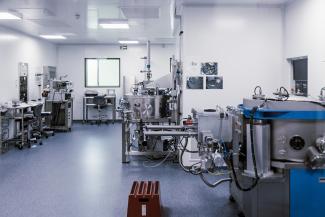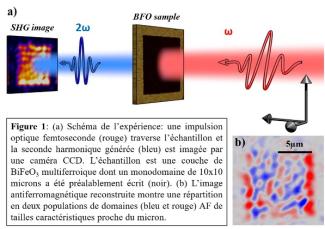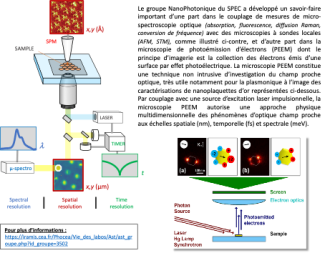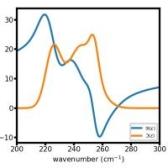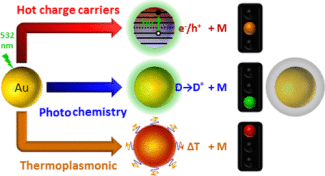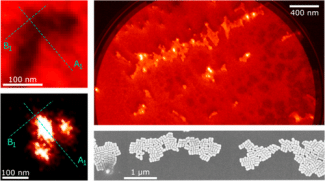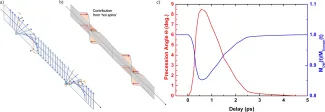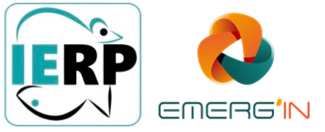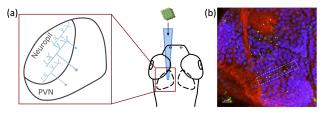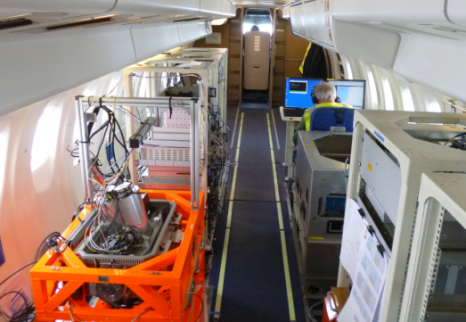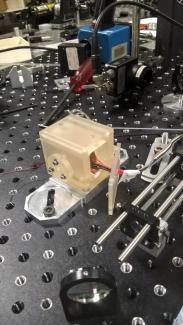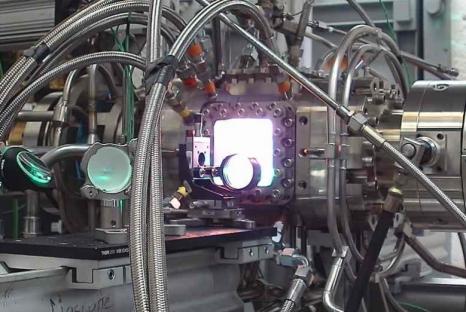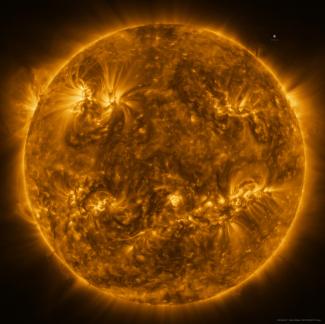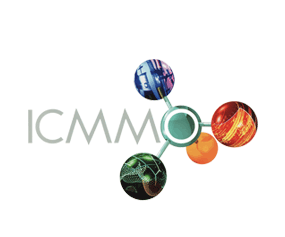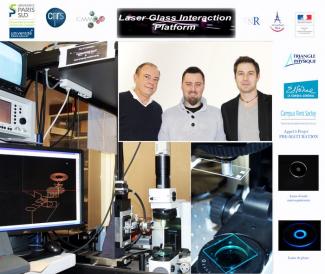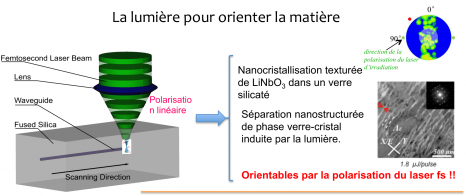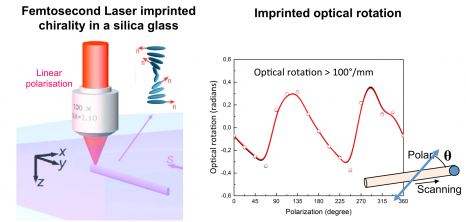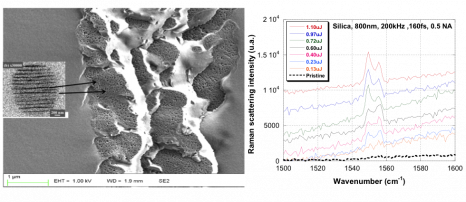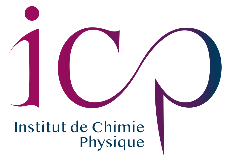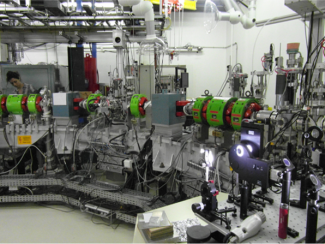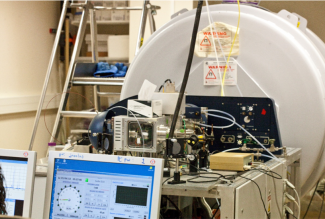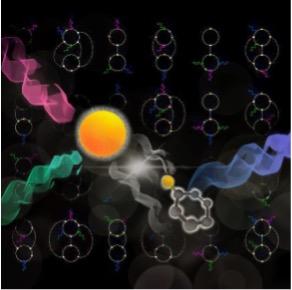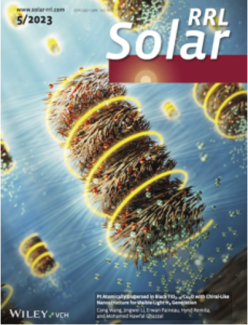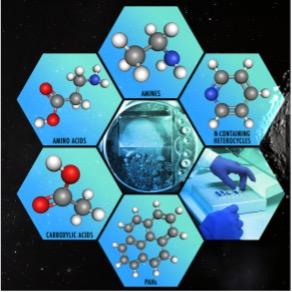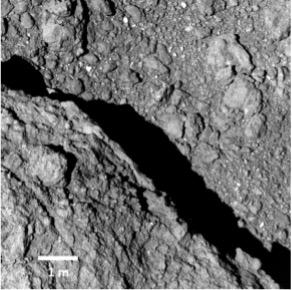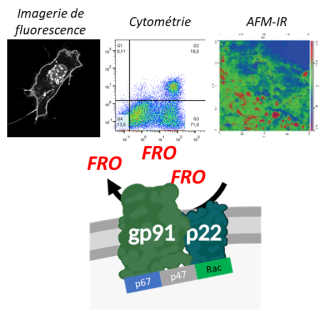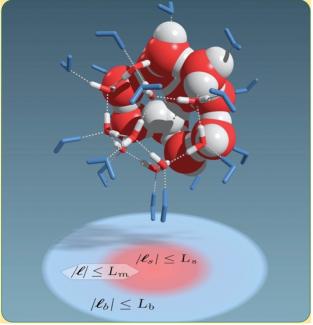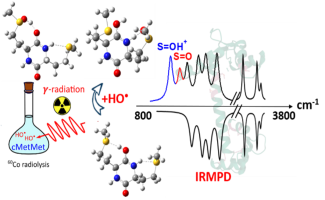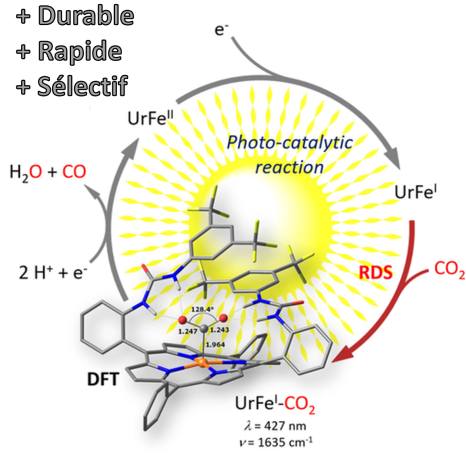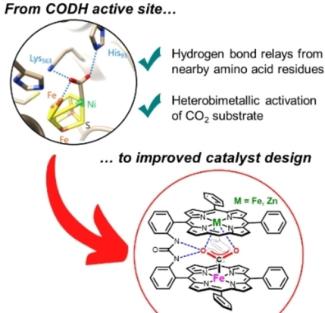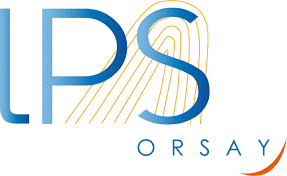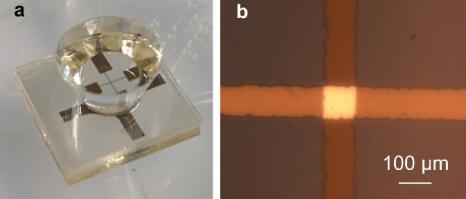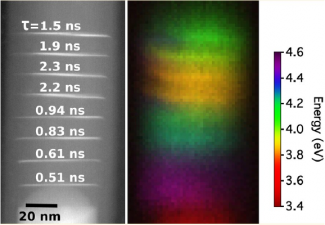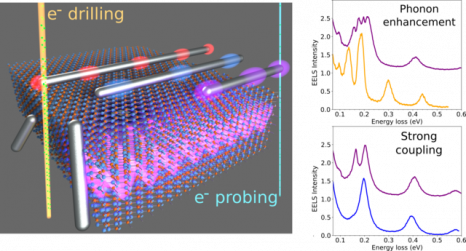Research - Institute for the Sciences of Light
700 permanent faculty members and researchers contribute to the advancement of the sciences of light in 28 laboratories at University Paris-Saclay. A very broad spectrum of topics is covered, ranging from fundamental concepts in quantum physics or optoelectronics to imaging applications for life sciences or development of cutting-edge instrumentation for environmental or space sciences.
The sciences of light are central to many research programs of the "Physics" and "Engineering and Systems Sciences" Graduate Schools. They also play a key role in other Graduate Schools: Chemistry, Life Sciences and Health and Geosciences, Climate, Environment, Planets. The Institute for the Sciences of Light aims to create synergies in cross-cutting research themes between these Graduate Schools.
Research topics
Extreme light, optics at the limits
(Ultrahigh intensity, relativistic optics, ultrashort pulses, X-UV optics and sources)
Imaging
(Biomedical imaging and microscopy, super-resolution, image sensors, lensless imaging, SNOM, …)
Information and Communication Technologies
(optoelectronics, optical fibers…)
Instrumentation
(Sensors, detectors, LIDAR, optical diagnostics, …)
Materials
(Inorganic, semiconductor, organic, liquid crystal, photochromics)
Nanophotonics
(Plasmonics, metamaterials, 2D materials, surfaces and interfaces, optomechanics)
Laboratories
(Currently under construction)
The Atmospheres and Space Observations Laboratory is a joint research unit specialising in the study of the fundamental physical and chemical processes governing the Earth's and planetary atmospheres and their interfaces with the surface, the ocean and the interplanetary environment.
To achieve this, the Laboratory has developed strong instrumental skills, building innovative instruments deployed from the ground and sometimes placed in orbit or sent to meet other bodies in the solar system. Numerical models of the atmosphere are also developed and used to interpret the various observations.
Teams attached to ISL :
- HELIOS (Heliosphere-exosphere)
- PLANETO (Planetology)
- STRATO (Middle atmosphere)
- SPACE (Statistics, Processes, Atmosphere and Water Cycle)
- TROPO (Pollution & Climate)
Platforms within the scope of ISL
PIT
The Integration and Test Platform (PIT) of the Versailles Saint-Quentin-en-Yvelines Observatory, under the joint supervision of the UVSQ and the CNRS, has three main functions:
- It coordinates the development of observation systems,
- Facilitates the pooling of technical resources,
- Provides facilities for instrument integration and testing.
This unique positioning aims to simplify and optimise instrumental development, particularly for the final integration and testing phases, which are often complex to manage at laboratory level.
HIGHLIGHTS
New nano-satellite (INSPIRE-SAT 7)
Dedicated to observing essential climate variables and probing the ionosphere, INSPIRE-SAT 7, a nano-satellite weighing around 2 kg, will be launched into orbit in 2023.
This nano-satellite will carry out observations for at least two years at an altitude of around 550 km. It will join UVSQ-SAT to form the first constellation of CubeSats in space dedicated to studying the Earth's climate. INSPIRE-SAT 7 will measure the Earth's radiation balance. It will observe the impact of ionospheric disturbances such as solar flares and magnetic storms on high-frequency waves and their frequencies of appearance. INSPIRE-SAT 7 will measure solar radiation in the ultraviolet range. It will also seek to put into orbit the first LIFI module (wireless communication technology based on the use of LED light) on board a CubeSat. Finally, it will carry an amateur radio payload. This new device will enable amateur radio operators to communicate on a global scale.
AEOLUS Space Lidar for wind measurements
The objective of the AEOLUS mission of the European Space Agency (ESA) is to carry out wind measurements on a global scale using space lidar in order to improve weather forecasting.
The lidar has 2 measurement channels, Rayleigh and aerosol, based respectively on the scattering of laser light by air molecules and by airborne particles.
The Rayleigh method derives directly from the technique developed by our laboratory (CNRS patent), which uses a double-zone Fabry-Pérot interferometer for fine optical filtering. This method is used on the two ground lidars of the OHP and the Observatoire de Physique de l'Atmosphère (OPAR) in Réunion.
PHEBUS UV spectrometer
PHEBUS (Probing of Hermean Exosphere By Ultraviolet Spectroscopy) is a dual optical spectrometer covering spectral ranges from the extreme ultraviolet (EUV: 55-155 nm) to the far ultraviolet (FUV: 145-315 nm). Embarked on the Bepi-Colombo / ESA probe bound for Mercury (scheduled to arrive in 2026), it is dedicated to characterising the composition and dynamics of the planet's exosphere, as well as the interactions between the surface and the exosphere.
Compared with its predecessors (e.g. MESSENGER/ NASA), PHEBUS is sensitive to very short wavelengths, enabling us for the first time to study Mercury's environment down to 55 nm, and therefore to detect additional species such as metals (Si, Mg, Fe), rare gases (Ar, Ne) and traces of hydrogen and helium in the exosphere.
VenSpec-U UV imaging spectrometer
VenSpec-U will be the ultraviolet channel of the VenSpec instrument suite on board the EnVision / ESA probe, which will arrive in orbit around Venus in 2035. It will monitor minor sulphur species (mainly SO and SO2) and the as yet unknown UV absorber above the upper clouds. It will study how the upper atmosphere interacts with the lower atmosphere, and in particular characterise the extent to which outgassing processes such as volcanic plumes are able to disturb the atmosphere through the thick Venusian clouds.
Currently being designed, it will consist of a two-channel spectral imager (spectral resolution of 0.3 nm in the 205-235 nm range; 2 nm in the 190-380 nm range) operating at nadir from EnVision's near-polar orbit.
C2N, the Centre for Nanosciences and Nanotechnology, is a joint research unit of CNRS and the University of Paris-Saclay. It has more than 400 members, and develops research in the fields of materials science, nanophotonics, nanoelectronics, nanobiotechnologies and microsystems, as well as nanotechnologies. The C2N Technology Centre is housed in a 2,900 m² clean room. Photonics is a strong line of research at C2N, with around 160 researchers, including 45 permanent staff, PhD students and post-docs. C2N's photonics department covers a wide range of research topics, from fundamental research to the development of innovative photonic devices and circuits for a wide variety of scientific fields, including quantum technologies, sensors, optical communications and photovoltaics. These activities are carried out by 8 research groups and a centre of expertise. Other activities carried out by other departments are also linked to ISL, such as materials science, microsystems, biosensors and neural networks.
Teams attached to ISL :
Section to be created
Platforms within the scope of ISL
PIMENT platformThe PIMENT platform offers a complete range of state-of-the-art, high-performance equipment, enabling research ranging from fundamental quantum physics to advanced integrated devices and micro-nanosystems. Its staff (including 27 permanent employees) support the development of processes required for laboratory research activities.
|
PANAM platformThe PANAM platform (staffed by 3 engineers) houses equipment and expertise in structural and chemical analysis. The resources used are X-ray diffraction, advanced transmission electron microscopy, microanalysis and atomic force microscopy. Structural (crystalline and morphological) and chemical analyses on an atomic scale are carried out to understand the growth mechanisms of nanostructures and correlate their structural properties with their functional properties (electronics, optics, magnetism) in close contact with C2N research teams and other academic and industrial partner laboratories. The PANAM platform is part of the C2N Technology Centre and is attached to the Materials Department.
|
POEM platformThe POEM platform (7 engineers, 14 researchers) houses the equipment (12 crystal growth units) for the crystal growth of thin films or nanostructures of IV and III-V semiconductors, two-dimensional (2D) materials and functional oxides. The techniques used are molecular beam epitaxy (MBE), metal-organic vapour phase epitaxy (MOVPE), low-pressure or ultra-high vacuum vapour deposition (UHV-CVD), laser ablation deposition (PLD) and gas-immersion laser doping (GILD). |
EXPERFOThe EXPErimentations RF et Optique (EXPERFO) department brings together a range of skills in the field of microwave signals and pulsed or modulated high-frequency optical signals. Engineers here develop advanced experiments or instrumentation, the framework of which is formalised in contractual projects with external partners. The department is also involved in setting up and operating measurement benches within C2N research teams. The experiments and characterisations carried out both on samples from the laboratory and on components from industrial or academic partners target the functional properties of these devices. Demonstrators focusing more specifically on technologies developed for the digital optical communications of the future are supported by the Descartes platform. |
HIGHLIGHTS
Electro-optical modulator integrated into the medium infrared range
SEM view of an integrated electro-optical modulator operating in the mid-infrared.
Absorption spectroscopy in the mid-infrared spectral range is a technique for detecting and quantifying the concentration of chemical substances in a given medium. Optical devices in this wavelength range are often based on free-space configurations, making them bulky and expensive. The integration of complete spectroscopic systems on photonic integrated circuits would have a major impact on the development of efficient, portable and widespread sensors. In particular, wavelengths between 5 and 12 μm are of great interest, as many molecules that are important for health or pollution monitoring (e.g. ozone, alkanes) have strong absorption lines in this spectral band.
In this context, the development of integrated electro-optical modulators (EOM) operating in this wavelength range is an essential element, making it possible, for example, to improve detection sensitivity via synchronous detection systems.
Researchers at C2N, in collaboration with the Politecnico Di Milano, have experimentally demonstrated an integrated electro-optical modulator based on a graded-index SiGe photonic platform. The free carrier dispersion effect is used to modulate the properties of the guided optical wave. Electro-optical modulation is achieved over a wide spectral range from 6.4 to 10.7 μm wavelength. In addition, operation up to 225 MHz has been demonstrated. These results pave the way for the development of compact spectroscopic systems on a chip.
Contact: Delphine Marris-Morini, delphine.morini@c2n.upsaclay.fr
Reference: Miguel Montesinos-Ballester, Lucas Deniel, Natnicha Koompai, Thi Hao Nhi Nguyen, Jacopo Frigerio, Andrea Ballabio, Virginia Falcone, Xavier Le Roux, Carlos Alonso-Ramos, Laurent Vivien, Adel Bousseksou, Giovanni Isella, and Delphine Marris-Morini, Mid-infrared Integrated Electro-optic Modulator Operating up to 225 MHz between 6.4 and 10.7 μm Wavelength, ACS Photonics 2022, 9, 1, 249-255, https://doi.org/10.1021/acsphotonics.1c01449
Vibrational resonance amplification in a thermo-optical optomechanical nano-cavity
Schematic diagram of vibrational resonance using an optomechanical resonator with thermo-optical non-linearity. A weak signal and a control signal are sent to the system to amplify the first-mentioned signal.
The mechanism for amplifying a weak signal, or vibrational resonance, is activated by modulating a high-frequency input field and subjecting it to a bistable system. In this context, we present a first experimental demonstration of the amplification of a low-amplitude optical signal in a thermo-optically bistable optomechanical nano-cavity, operating in the telecoms field. We are using a fully integrated hybrid platform comprising a suspended photonic crystal whose mechanical vibrations are exploited to access the thermal properties of the system. By using the thermo-optical non-linearity, which is useful for tunable components or for carrying out elementary all-optical calculations, we have been able to obtain an amplification of the weak optical signal of up to 16 dB. Beyond the optical domain, these results published in NanoLetters are particularly well suited to detection applications such as thermometry.
Contact: Rémy Braive
Reference: Guilhem Madiot1, Sylvain Barbay1, and Rémy Braive1,2, Vibrational Resonance Amplification in a Thermo-Optic Optomechanical Nanocavity, Nano Lett. 2021, 21, 19, 8311–8316, DOI : 10.1021/acs.nanolett.1c02879,
1Centre de Nanosciences et de Nanotechnologies – C2N (CNRS/UPSaclay), 2Université de Paris
Semiconductor-based harmonic oscillators
Record absorption at THz and ambient temperature in semiconductors thanks to the properties of harmonic oscillators
The harmonic oscillator is a fundamental concept in physics: pendulums, modes of vibration in molecules, resonant electrical circuits and many other systems can be modelled as harmonic oscillators. Given the breadth of its use, the experimental implementation of such oscillators - as faithfully as possible - remains a major challenge.
The classic approach to implementing harmonic oscillators is to give the system's energy potential a parabolic shape. Obtaining such a potential in semiconductor systems, where it is normally governed by the crystal lattice, presents the challenge of adapting the potential while maintaining very high material quality.
Using an innovative epitaxial growth technique, an international team including researchers from the University of Waterloo (Canada) and C2N (France) has demonstrated harmonic oscillator networks on a semiconductor platform by faithfully implementing parabolic potentials with semiconductor quantum wells. Their results have been published in the journal Physical Review Letters.
High-efficiency silicon-germanium photodetector for on-chip communications
Researchers at C2N, in collaboration with CEA LETI and STMicroelectronics, have produced a fast, high-efficiency avalanche photodetector in silicon-germanium. The component, whose manufacturing technology is fully compatible with that of the semiconductor electronics industry, also meets the current standards for high transmission rate telecommunications fibre optic networks.
These results, published in the journal Optica, illustrate the prospects of nano-photonics on a chip for optoelectronic data communications technologies. Compatible with telecoms signal standards, particularly in the wavelength range, the performance of these silicon-germanium avalanche photodetectors gives them a promising range of uses in fibre links, such as in data centres, cloud servers and computing, and not least in chip-scale interconnections.
A cascade towards criticality
Researchers at C2N (CNRS/Université Paris-Saclay), the PhLAM laboratory (CNRS/University of Lille) and ETH Zurich have discovered a new mechanism in quasi-periodic structures, through which criticality emerges, a phase in which waves are neither localised nor delocalised but in a so-called "critical" state.
Quasi-periodic structures, which have an order but are not periodic, are the source of extraordinary beauty in nature, art and science (iridescent butterfly wings, Islamic art, Penrose paving, etc.). They are at the crossroads between periodic systems and randomly disordered systems. For physicists, quasi-periodic order is both aesthetically and intellectually fascinating. Many physical processes, such as the localisation of classical and quantum waves, which are well described in periodic structures, change fundamentally when they occur in quasi-periodic systems. An international team of researchers from the Centre de Nanosciences et de Nanotechnologies - C2N (CNRS / Univ. Paris-Saclay), the Phlam laboratory (CNRS / Université de Lille), and ETH Zurich describe, in a publication in the journal Nature Physics, a work combining experiment and theory in which they explore the localisation of waves in a new type of quasi-periodic structures, and discover a new mechanism by which criticality develops.
The Charles Fabry Laboratory (LCF) is a joint research unit of the Institut d'Optique Graduate School (IOGS), the CNRS and the Université Paris-Saclay. It has a staff of around 130, half of whom are doctoral and post-doctoral students. The research carried out covers a broad spectrum of optics and its applications, at the interface between physics and engineering. The LCF is therefore an interface laboratory between two CNRS institutes: the Institut de Physique (INP) and the Institut des Sciences de l'Ingénierie et des Systèmes (INSIS), and two Graduate Schools of the Université Paris-Saclay: Physique and Sciences de l'Ingénierie et des Systèmes (SIS). Based in Palaiseau, it is the historical pillar of research at IOGS.
The LCF is structured into research groups with well-defined themes: Quantum Gases, Quantum Optics, Nanophotonics, Lasers, Biophotonics, Nonlinear Photonics, Imaging and Information, XUV Optics and Industrial Photonics.
The LCF has a number of industrial partnerships (Amplitude with a joint laboratory on ultrashort pulse lasers, Thales, Safran, STMicroelectronics, EDF, etc.) and is leveraging its work to create start-ups such as Damae Medical for the early diagnosis of skin cancers and Pasqal for the development of scalable quantum information processors.
Equipes attachées à l'ISL :
- Biophotonique
- Gaz Quantiques
- Imagerie et Information
- Lasers
- Nanophotonique
- Optique Quantique
- Optique XUV
- Photonique Non Linéaire
- Photonique Industrielle
Plateformes relevant du périmètre de l'ISL :
The physics of condensed matter is studied at SPEC, from its most fundamental aspects to applications in suitable cases. The main areas of research concern complex systems and statistical physics, with light playing an important role, from the study of the optical nailing of glasses to the study of turbulence using particle image velocimetry (PIV) techniques; nanoelectronics; quantronics and quantum technologies, working on the detection of single photons in the GHz range and the generation of non-classical radiation by quantum conductors; nanomagnetism and oxides, which in particular exploits 2nd harmonic generation for high-resolution imaging of antiferromagnetic domains (see illustration 1 below), and nanophotonics (see illustration 2 below - see also the lab's website), which focuses on molecular plasmonics, i.e. the various photonic interaction mechanisms between conjugated molecules and metallic nanostructures. The design and development of hybrid nano-objects offering innovative photonic functions is undertaken by combining different aspects: nanofabrication methods (optical lithography in particular), electron photoemission microscopy, non-linear nanophotonics, self-assembled photonic objects or optical tweezers.
SPEC is a CEA-CNRS joint research unit (UMR 3680) which reports to DRF/IRAMIS, within the CEA at Saclay and the INP at CNRS.
Teams attached to ISL :
- LEPO / NanoPhotonics team: 4 permanent researchers (CHARRA, DOUILLARD, FIORINI, VASSANT), 1 ITA (FORGET), 1 IR (MARTINOTTI), currently 2 post-docs and 1 PhD student.
- LNO / SHG team: 2 permanent researchers (VIRET, CHAULEAU), currently 1 post-doc
- SPHYNX / Turbulence and glass: 6 permanent researchers (AUMAITRE, CHEMINET, DAVIAUD, DUBRULLE, GALLET, LADIEU), 1 IR (WIERTEL), currently 1 postdoc and 4 PhD students.
HIGHLIGHTS
Formation of supramolecular dyads of self-assembled functional networks on graphene
A collaborative study with two teams from Sorbonne Université, (IPCM and MONARIS) and two teams from Université Paris-Saclay (SPEC and ILV) shows that two types of dyads can be formed in solution, depending on the supramolecular interactions that dominate the equilibrium and the type of molecular support used. A metal-ligand association was observed between perylene and the porphyrin support, while phthalocyanine leads to a dyad formed by π-π interactions. They also conclude that scanning tunneling microscopy is not a reliable technique for characterising surface assemblies, due to strong probe-molecule interaction. Other spectroscopic techniques, such as epifluorescence microspectroscopy coupled to atomic force microscopy, have been investigated, but the authors believe that it is ambitious to rely solely on these techniques to correlate observations from the nanoscale to the micrometre scale
Link to the article: J. Mat. Chem. C.
Determination of the far-infrared dielectric function of an InGaAs thin film
Research teams at SPEC and C2N have developed a method for determining the parameters of the far-infrared dielectric function of a thin layer of In0.53Ga0.47As. This method uses a detuned Salisbury screen configuration to enhance the interaction of far-infrared light with the optical phonons of this material. Experimental data are obtained from angle-resolved polarised reflectance spectra and Raman spectroscopy. These data are then fitted to a dielectric function model that satisfies causality. The researchers provide a complete set of parameters for an analytical expression of the dielectric function of In0.53Ga0.47As in the frequency range of optical phonons and derive a value for the static dielectric constant.
Link to the article: Opt. Mater. Express
Probing plasmon-induced chemical mechanisms using radical nanophotopolymerisation
A high-resolution characterisation method based on transmission electron microscopy has been developed by the IS2M, NIMBE, SPEC and L2N teams. This method and the adjustment of the composition of the photopolymer and the irradiation conditions have made it possible to revise the physico-chemical mechanism induced by localised surface plasmon resonance (LSPR). The researchers demonstrate that the photochemical pathway is the main mechanism under the mild irradiation conditions chosen for this process. More generally, photopolymerisation is proving to be a powerful tool for studying the coupling between metallic nanostructures and organic motifs.
Link to the article: J. Phys. Chem. C
Creation of gold nanorod assemblies by deep UV lithography
A new method has been developed to model arrangements of gold nanorods (GNRs) on substrates by PPMS, SPEC, and IS2M. By combining deep UV lithography with controlled deposition of functionalized GNRs, complex GNR arrangements were obtained. Near-field coupling was examined using photoemission electron microscopy (PEEM) on single GNR aggregates, dimers and elongated forms. This comparative study showed different types of near-field coupling efficiency, which depend on the polarisation of the incident light, the inter-particle spaces and the angles between the nanorods. Near-field hot spots are associated with areas of interparticle spacing.
Link to the article: J. Phys. Chemical. C
Exploring the origin of turbulence irreversibility using a new large-scale experimental device
A team of researchers from SPEC and LMFL are collaborating to explore the origin of irreversibility in turbulence using a new large-scale experimental device called the Giant Von Kármán - GVK, which is unique in its size.
The device makes it possible to demonstrate the correlation between zones of high dispersion of fluid trajectories, which are a sign of irreversibility, and highly dissipative zones.
More info here + link to the article: Phys. Rev. Lett.
Ultrafast temporal evolution of the walls of chiral Néel magnetic domains
Thanks to the international collaboration, the behaviour of chiral magnetic domain walls (DWs) on the ultrashort time scale after optical excitation in perpendicularly magnetised asymmetric multilayers has been reviewed. Magnetization dynamics are probed using time-resolved circular dichroism in resonant magnetic X-ray scattering (CD-XRMS). The researchers observed a transient reduction in the CD-XRMS in picoseconds, which they attributed to coherent and incoherent spin-current-induced torsional torques in the DW's ever-changing spin texture. The authors claim that a specific demagnetisation of the DW's internal structure induces spin flux from neighbouring magnetic domains. They identify this temporal change in the DW texture shortly after the laser pulse as a distortion of the Bloch-Néel-Bloch mixed transient form in a direction transverse to the DW.
Link to the article: Nat Commun
The INRAE Rodent and Fish Experimental Infectiology unit (UE0907 IERP) is located on the Jouy en Josas campus. It is an integral part of Université Paris Saclay (Graduate School Life Sciences and Health, Institut PsiNano and ED SDSV) and of the EMERG'IN national research infrastructure for the in vivo study of infectious diseases.
Labelled an IBISA platform and open to the scientific community, its main mission is to provide integrated services: production of animals with controlled health status, development of custom infectious models and phenotyping of experimental animals (model animals and models of agronomic interest).
It therefore has a rodent animal facility, an experimental fish farm and an imaging phenotyping platform, with level 2 containment for the study of animal and human pathogens.
Projects relating to the study of host-pathogen interactions use various fluorescence microscopy techniques (confocal, 2photon and light sheet) and bioluminescence imaging from in vivo to fixed tissues. Infectious processes are observed at different scales, from the cell to the whole organism, in particular through the development of tissue transparency techniques.
Various zebrafish models are being deployed for the dynamic study of complex biological processes (inflammation, axonal transport, tissue regeneration), mainly using fluorescence imaging approaches (photoablation, 3D+t, SHG).
The model is also relevant for the in vivo study of bioprobes (oxidative stress, metabolic disorders, etc.) and nanoparticles (nanoKTP, nanodiamands), particularly for the transport of therapeutic molecules.
HIGHLIGHTS
Publications
Study "In Vivo Fast Nonlinear Microscopy Reveals Impairment of Fast Axonal Transport Induced by Molecular Motor Imbalances in the Brain of Zebrafish Larvae" highlights the imbalances in molecular motors in the brains of larval zebrafish.
(a) NanoKTPs (green cube) are microinjected into the optic tectum of zebrafish larvae (delimited by a dotted line, zoomed in the inset on the left). Some of the NanoKTP is then spontaneously internalised by the axons of periventricular neurons (PVN) (blue). (b) Two-photon scan of the optic tectum region merging three detection channels: immunolabelled acetylated tubulin (red emitting dye, marking axons), labelled cell nuclei (blue) and SHG of nanoKTPs (green dots). Scale bar: 10 µm. This composite image shows that a fraction of the nanoKTP colocalizes with axons present in the same cross-section of the brain (particularly in the axon surrounded by the dotted white line).
👥 A collaboration between Grimaud B, Frétaud M, Terras F, Bénassy A, Duroure K, Bercier V, Trippé-Allard G, Mohammedi R, Gacoin T, Del Bene F, Marquier F, Langevin C and Treussart F.
🔬🧠 This study promises to open new perspectives in the understanding of axonal transport mechanisms.
📖 Link to the article : ACS Nano
New research uncovered: Roscovitine Worsens Mycobacterium abscesses Infection
🦠🔬This exciting study by Le Moigne et al. has revealed that Roscovitine could have a negative impact on Mycobacterium abscesses infections. By reducing the DUOX2-mediated neutrophil response, it could worsen infection progression.
📚In-depth understanding of these mechanisms is crucial for the development of new therapeutic strategies. Well done to the research team for this major breakthrough in the fight against resistant bacterial infections!
📖 Link to the article: AJRCCM
Promising advances for understanding and treating cardiovascular disease.
📌 The study, "Deficiency in HHT-associated Endoglin elicits hypoxia-driven congestive heart failure in zebrafish" led by E. Lelièvre, C. Bureau, Y. Bordat, M. Frétaud, C. Langevin, C. Jopling and K. Kissa, explores the effects of Endoglin deficiency on the development of hypoxia-related congestive heart failure in zebrafish.
👉These promising results open up new possibilities for understanding and treating cardiovascular diseases, particularly those linked to HHT (Hereditary Haemorrhagic Telangiectasia).
📚 To find out more, read the full article: Dis Model Mech
Scientific projects
ADEME EcoXtract®Protein:
Bringing a 100% biobased extraction solution to the animal feed market as an alternative to the use of hexane. IERP is responsible for determining the impact of these new processes on fish health by developing new 3D histology methods (lightsheet imaging of transparent organs and anatomopathology).
ProbAVir :
Following on from work recently published (Grimaud et al.) in collaboration with LUMIN, the project aims to study the pathophysiology of two neurotropic viruses (Sindbis and VSV) in zebrafish models by measuring the impact of infection on axonal transport and microglial activation (Bioprobes funding). IERP has developed these viral infection models and the project will benefit from the in vivo axonal transport tracing method, based on the tracking of optically active nanoparticles in the central nervous system of zebrafish larvae.
AquaNanoTox :
Impact of environmental plastics on fish health (GDR Imabio funding). Micro/nanoplastics (M/NP) are particles produced by the decomposition of plastic waste in the environment. Variable in composition, size and shape, they are poorly characterised in living organisms due to a lack of suitable detection methods. The project set up zebrafish models exposed to different plastics (PE, PP) to 1/define the impact on fish health (development, growth and inflammation) and 2/develop methods for detecting M/NPs in vivo without labelling. The work has made it possible to observe M/NPs in the intestines of larvae exposed by reflection using fluorescence imaging, and experiments are underway to correlate these data with Raman imaging (developed on cells). This interdisciplinary project brings together 2 PsiNano Institute laboratories: IERP and NIMBE, as well as the BFA unit, UMR 8251 (in vivo Raman imaging).
ONERA's Physics, Instrumentation, Environment and Space Department (DPHY) designs innovative instruments and assesses certain aerospace environments and their impact on onboard systems. The DPHY is based in Palaiseau, Châtillon and Toulouse. It employs around 130 people, including nearly 70 researchers and 35 PhD students. The number of staff working within the ISL perimeter is 16 researchers and typically 7 PhD students.
In particular, the DPHY is developing:
- new inertial instruments for guidance-navigation, geodesy or fundamental physics, based on micro/nano technologies, electrostatics or atomic interferometry ;
- methods and instruments for metrological characterisation of flows or plasmas, based on optical spectroscopy, sensors or specific sources, such as tunable lasers, OPO, LIDAR, photoacoustics, etc.
- plasma sources and electric thrusters.
A large part of this research is carried out in close collaboration with ISL, particularly with regard to instrumentation and metrology using laser spectroscopy and cold atom inertial sensors.
HIGHLIGHTS
Airborne measurements with the DPHY cold atom gravimeter
In April 2019, ONERA, in collaboration with GET, DTU and Shom, carried out a new campaign of airborne measurements with the GIRAFE 2 cold atom gravimeter, which is the only instrument in the world capable of making absolute gravity measurements in aircraft. This campaign, supported by CNES and ESA, was carried out on an ATR 42 with the Service des Avions Français pour la Recherche en Environnement (SAFIRE). Gravity measurements were taken in the Bay of Biscay, in the Pyrenees and off the coast of Brest, with improved accuracy compared with the last airborne campaign using the GIRAFE 2 gravimeter. These tests confirm the interest of atomic technology for airborne gravimetry, which is essential in geodesy and geophysics, and of great interest for the study of the land/sea transition.
More details on this instrument in the publication: Y. Bidel, N. Zahzam, C. Blanchard, A. Bonnin, M. Cadoret, A. Bresson, D. Rouxel & M.F. Lequentrec-Lalancette, "Absolute marine gravimetry with matter-wave interferometry", Nat Commun 9, 627 (2018).
https://doi.org/10.1038/s41467-018-03040-2
First environmental tests of an optical frequency conversion module for space Lidar applications
As part of the ESA GENUIN project, an optical frequency conversion module for space Lidar applications has been developed.
A new opto-mechanical design of the OPO (Optical Parametric Oscillator) sub-assembly was carried out at DPHY Île-de-France. The first vibration tests were successfully carried out on this preliminary design. Amplification tests were successfully carried out in conjunction with KTH (Sweden), to amplify the energy delivered by this OPO, using innovative non-linear crystals, which were also the subject of an initial environmental study by the Toulouse DPHY. Work on this subject has continued since 2019 as part of the H2020 LEMON project coordinated by Myriam Raybaut of DPHY.
LEMON project website: https://lemon-dial-project.eu/
High-speed ps/s CARS thermometry for combustion studies
After several years of effort regarding the developments of the MICADO combustion test bench (MultiPhysics Department for Energetics - DMPE - of ONERA) and the high-speed Coherent Anti-Stokes Raman Scattering (CARS) thermometry technique (DPHY), a first measurement campaign combining the two methods was carried out during the summer of 2019.
As part of the SOPRANO project (H2020 EU), initial CARS measurements in hybrid fs/ps regime were acquired at high cadence (1 kHz) under operational conditions in heated air (800 K), during pressure rise (3-7 bar), and then within a kerosene/air combustion. The measurements are currently being analyzed and are expected to characterize the MICADO bench dedicated to research activities in energetics.
SOPRANO project website: http://www.soprano-h2020.eu/
The Institute of Space Astrophysics (IAS) is a joint research unit of the CNRS and the University of Paris-Sud 11 (UMR8617). The laboratory brings together 140 people at the Orsay site (Essonne): 43 researchers and teaching researchers, 73 engineering, technical, and administrative staff, 17 students, and 7 postdoctoral researchers. The IAS is part of the Observatory of the Sciences of the Universe of the University of Paris-Sud (OSUPS).
Teams attached to ISL:
- Team of Solar and Stellar Physics
- Cosmology
- Astrochemistry and Origins
- Astrophysics of Interstellar Matter
- Solar System and Planetary Systems
HIGHLIGHTS
©ESA & NASA/Solar Orbiter/EUI team; Data processing: E. Kraaikamp (ROB)
The image of the Sun captured by Solar Orbiter in extreme ultraviolet light at a distance of approximately 75 million kilometres. The image is a mosaic of 25 individual images taken on March 7, 2022, by the high-resolution telescope of the Extreme Ultraviolet Imager (EUI) instrument. Taken at a wavelength of 17 nanometres, in the extreme ultraviolet region of the electromagnetic spectrum, this image reveals the Sun's upper atmosphere, the corona, which has a temperature of about one million degrees Celsius. In total, the final image contains over 83 million pixels in a grid of 9148 x 9112 pixels, making it the highest resolution image ever taken of the solar disk and its outer atmosphere, the corona.
An image of the Earth is also included for scale, positioned at 2 o'clock.
More info here
The Institute of Molecular Chemistry and Materials of Orsay is one of the largest French laboratories accredited by the CNRS. With a staff of around 300 people, its nine research teams cover organic and inorganic chemistry, molecular and materials sciences, as well as strong interfaces with life sciences and physics. Integrated into the scientific campus of the University of Paris-Sud, ICMMO contributes to the emergence of the new Paris-Saclay University.
Teams attached to ISL:
Platforms within the scope of ISL
-
Plateform FLAG
The primary motivation behind the FLAG project is to consolidate a laser platform based on cutting-edge technology to investigate interactions between high-repetition-rate ultrashort pulse lasers and transparent materials (such as glasses, crystals, and polymers). This platform aims to foster collaboration among scientists from various communities and is open to partnerships with academic, medical, and industrial sectors. The FLAG laser source is developed and installed by Amplitude Systèmes. It is based on Ytterbium technology and features four main laser outputs: two at 1030 nm, one at 515 nm, and one at 343 nm, with the ability to combine several of them. It delivers high-repetition-rate femtosecond pulses (from single pulse to 2MHz) with high energy (typically 25uJ/pulse) and average power >10W.
The FLAG platform addresses numerous innovation needs at the university, regional, and national levels:
- Collaborative Projects: Fundamental studies on 3D modification mechanisms of optical properties of transparent materials, development or implementation of products or processes in collaboration with companies and research laboratories. Partners capitalize on each other's expertise and resources, contractually committing to common objectives and shared outcomes. A team and dynamic are established to advance both academic and industrial projects.
- Services: Expertise, technical support for laboratories and companies, feasibility studies for manufacturing processes, or technical services (such as volume micro-machining of transparent materials).
- Shared Equipment Platform: Access to a shared equipment platform at ICMMO for material characterization, dedicated resources for companies and laboratories, technical assistance.
HIGHLIGHTS
One of the remarkable results achieved by MAP is the demonstration of light polarization sensitivity in the photo-precipitation of nanocrystals, which can be oriented accordingly, opening up a new avenue in laser-based materials science (with two patent proposals).
Another surprising result is the demonstration of circular optical properties where they shouldn't exist! Specifically, MAP's work has shown that a femtosecond laser, which initially produces an achiral beam (linear polarization of the laser), is capable of breaking the achirality of a material like silica glass, even under achiral experimental geometry (normal incidence), thereby constituting an apparent violation of parity (Light: Science & Applications 5, 16178 (2016) IF-14.6).
For several years, MAP has been focusing on the interaction between matter and high-power femtosecond laser pulses. These studies, funded by projects (European, ANR, and industrial), have yielded further results, such as proof of ultra-fast decomposition of silica (in 160 fs!), resulting in significant birefringence elucidated by detailed analysis using electron microscopy and Raman spectroscopy (Laser Photonics Rev. 7, 953 (2013) IF-8). This shape birefringence can be oriented on demand with the laser polarization and allows for the inscription of 2D or 3D birefringent optical components such as polarization converters, waveguide arrays, or achromatic rotators, paving the way for the realization of beams whose polarization can be structured not only in the beam's transverse section but also longitudinally.
Key indicators:
- International Engagement: List of main users in the last 5 years: IAP Jena (Germany), ORC Southampton (United Kingdom), Kyoto University (Japan), UTS (Sydney, Australia), UNSW (Sydney, Australia), Universidad de Cantabria (Spain).
- Number of laser operating hours per year: > 8500 laser hours/year.
- Main industrial users: Horiba Jobin-Yvon, Saint Gobain, Thorlabs, ONERA, CEA.
The Institute of Physical Chemistry (ICP) is an interdisciplinary research unit anchored in Chemistry, with projects at the interfaces with Physics and Life Sciences. The Unit is structured around four scientific groups (CAPRI, CpSysBio, TEMiC, TheoSim) associated with two unique platforms in France: I) the ELYSE accelerator for ultrafast pulsed radiolysis and photolysis and transient absorption in the UV-Visible range; II) the CLIO free electron laser coupled with mass spectrometry in the infrared. The ICP also hosts advanced technical platforms for time-resolved spectro-imaging based on laser light sources spanning the UV-Vis-IR spectral range: two-color visible-infrared nonlinear optical spectroscopy (2C-SFG); time-resolved microwave conductivity in the visible (TRMC); infrared nano-spectro-imaging (NanoIR); time-resolved fluorescence spectro-imaging in the UV-visible range. The use of light interaction allows the study of chemical processes over wide time ranges, from femtoseconds to seconds.
Platforms within the scope of ISL
Plateform ELYSE
The purpose of the ELYSE electron accelerator, operational since 2005, is to trigger very short-lived physical and/or chemical phenomena generated by the passage of a high-energy electron beam or laser beams, allowing their observation through time-resolved detection methods. The ELYSE Rapid Kinetics Center is based on a 3 and 9 MeV electron accelerator, delivering pulses of 5 to 10 picoseconds. Electrons are generated by a photocathode, and the electron emission process from the semiconductor is triggered by a femtosecond pulsed laser. This laser is also used to generate light pulses that enable the probing of ultrafast phenomena at different time scales, often through UV-Vis-NIR spectrophotometry. ELYSE's femtosecond laser is also used for two other experiments: condensed phase reactivity by femtosecond photolysis and a THz spectroscopy platform operated by the startup TERATONICS. The temporal structure of the electron beam and the diagnostic tools make ELYSE a unique platform in Europe. The accelerator is equipped with the most advanced optical detection systems, some of which are entirely original and only exist on this installation. Two detection systems, Streak Camera and pump-probe, are respectively used for the so-called diverted and direct lines. This Center is widely open to the scientific community. Several teams from ICP, teams from the University of Paris-Saclay, and teams from other countries also use the pulsed radiolysis setups. On average, about 8 publications per year in high-impact international journals (IP > 3) have been achieved thanks to ELYSE equipment. Operating and small equipment costs amount to around €115k/year, co-financed by own resources (including ANR) and the University of Paris-Saclay, which has been supporting the platform on an annual basis since 2020. Elyse is also part of the EMIR&A network (National Network of Accelerators for the Irradiation and Analysis of Molecules and Materials).
Plateform CLIO
Originally, CLIO stood for "Collaboration for an Infrared Laser at Orsay," a collaboration between LURE and LAL that constructed the Free Electron Laser (LEL) from 1988 to 1991. In 2005, following the closure of LURE, CLIO was integrated into ICP. The two main elements of the LEL are the linear accelerator, which produces electron beams with adjustable energy from 10 to 45 MeV, and the undulator integrated into the optical cavity, which generates infrared photons. Adjustment of the magnetic field of the undulator allows continuous tuning of the photon energy to a given electron energy. Only three other LELs in the world, at the University of Nijmegen, the Fritz Haber Institute in Berlin, and the Helmholtz-Zentrum in Dresden, also allow adjustment of the undulator's magnetic field. Moreover, CLIO has the specificity of being able to simultaneously produce two infrared beams at two different wavelengths between 4 and 40 μm. The duration of these pulses is on the order of picoseconds, and they are naturally synchronized at the picosecond level for both colors. Experimental setups are permanently installed and coupled to the LEL. Each setup is also equipped with an Optical Parametric Oscillator (OPO) laser operating from 2 to 5 μm, complementing CLIO's spectral range (5-150 μm). 30 to 35 weeks of beamtime/year are offered to users. The distributed beam time per year is around 2000 hours. A program committee meets once a year to review research projects. The hosting of European users is supported through "access to infrastructures" contracts, with the CLIO LEL being part of a consortium of synchrotrons and LELs. Since May 2016, the Trans National Access (TNA) network called CALIPSOPlus (Convenient Access to Light Sources Open to Innovation, Science and to the World) has been supported under the European Horizon 2020 program (No. 730872). The current permanent setup coupled to CLIO is as follows:
- SMAS: Structural characterization of ions within a mass spectrometer based on infrared spectroscopy. This is referred to as IRMPD (Infrared Multiple Photon Dissociation) action spectroscopy, as it probes fragmentation induced by infrared absorption.
HIGHLIGHTS
Complex systems: draw me the optical response.
If it's relatively straightforward to describe how an atom, molecule, or solid absorbs, emits, or scatters light, the exercise proves much trickier for hybrid or composite systems. That's why scientists from the Institute of Physical Chemistry (CNRS/University Paris-Saclay) and the GRASP-Biophotonics laboratory (University of Liège, Belgium) propose an original approach using fundamental principles of solid-state physics, which allows for describing all processes at play during the light-composite system interaction, explicitly including interactions among its various components, thus providing unique insights into their composition and structure (CNRS Press Release 2022).
References : Phys. Rev. A et Phys. Rev. B.
Pt atomically dispersed in TiO2x/CuxO black with a spiral-shaped nanostructure for H2 generation in visible light.
The development of a new TiO2-x/CuxO material decorated with Pt atoms is described. This material, which features oxygen vacancies and a chiral architecture, allows for improved properties in visible light harvesting due to increased internal light reflection. Pt atoms were deposited both on the TiO2-x and on the CuxO nanoparticles, forming an atomic-scale alloy. This structural optimization gives the photocatalyst excellent light-harvesting capabilities in the visible region, making it a promising photocatalyst active in the visible spectrum.
This article has been chosen to illustrate the cover of the journal Solar RRL.
The asteroid Ryugu contains the basic building blocks necessary for life.
The Hayabusa2 spacecraft (JAXA, Japanese space agency) collected samples from the surface of Ryugu, a carbonaceous asteroid near Earth, between 2018 and 2019 and returned them to Earth in 2020, preserving them from any contamination. This recently published article in the journal Science presents the initial results of an international consortium, including contributions from France at the Institute of Planetary and Astrophysical Sciences in Grenoble (CNRS/University Grenoble Alpes/CNES), the Institute of Physical Chemistry (CNRS/Université Paris-Saclay), and the Laboratory of Physics of Ionic and Molecular Interactions (CNRS/Aix-Marseille Université), which conducted the analysis of soluble organic matter accessible in three grains. The Ryugu samples bear traces of the origin of the solar system and offer insight into the organic matter available at the origin of life. They contain a variety of molecules containing CHNOS atoms, formed by methylation, hydration, hydroxylation, and sulfuration reactions. The detected compounds are compatible with an abiotic origin and are likely the result of aqueous reactions within the primordial Ryugu.
Link to the article : Science
Formation and evolution of the carbonaceous asteroid Ryugu: Direct evidence from returned samples.
The Japanese mission Hayabusa2 from JAXA brought back samples of the primitive carbonaceous asteroid Ryugu. Analyses of these samples by an international research team including scientists from CNRS-INSU and CNRS-IN2P3, with the support of CNES, have led to a proposed scenario for Ryugu's history, including its formation during the fragmentation of its parent asteroid. Ryugu samples contain minerals (hydrated silicates, carbonates, magnetite) as well as organic materials and carbonated water. A small proportion of the minerals on Ryugu's surface formed close to the Sun. Ryugu has a composition remarkably similar to the Orgueil meteorite, which fell in France in 1864 and is preserved at the MNHN in Paris. Orgueil belongs to a rare class of meteorites and is used as a reference for the average composition of the solar system. Thus, Ryugu samples offer a unique insight into this type of primitive material.
Link to the article: Science
Consequences of constitutive NOX2 activity in living cells: Cytosol acidification, apoptosis, and localized lipid peroxidation.
The NADPH oxidase (NOX2) is a key enzyme of the immune system whose activity leads to the production of highly toxic reactive oxygen species (ROS). NOX2 is composed of six proteins, 2 membrane-bound (gp91 and p22) and 4 cytosolic (p67, p47, p40, and Rac). NOX2 activation relies on the assembly of cytosolic proteins with gp91 and p22. Researchers have designed a chimeric protein composed of essential domains of p47 (amino acids 1 to 286), p67 (amino acids 1 to 212), and Rac1Q61L. This trimer, once present in cells, activates NOX2 without stimulus and produces intense and continuous ROS. Using this trimer, we have studied the consequences of continuous NOX2 activity on cellular physiology deploying a range of spectro-microscopy strategies, all available at the ICP on the MUSIICS and SpICy platforms. We have shown that this sustained activity leads to intracellular pH acidification, triggers apoptosis, and results in local lipid peroxidation in the membrane by AFM-IR. These local membrane damages are strongly correlated with the trimer's tendency to form clusters in the cell membrane, as observed by FRET-FLIM microscopy.
Link to the article : BBA - Molecular Cell Research
Smolyak algorithm adapted for system-bath separation: Application to an encapsulated molecule with large-amplitude motions.
Quantum studies of nuclear motion using grid-based methods are generally limited to small systems, i.e. fewer than ten degrees of freedom. Over the past decade, Smolyak sparse grid approaches have partially lifted this restriction by allowing the study of systems with several dozen degrees of freedom. In this study, we proposed combining a Smolyak-type approach with a separation of the object under study into a contribution treated accurately and a contribution treated less accurately. This approach allows for quantum studies of objects with up to a hundred degrees of freedom without limitation on the expression of the Hamiltonian. The effectiveness of this approach is illustrated by simulating the movements of an H2 molecule encapsulated in hydrate clathrates. Specifically, the modes describing the translation and rotation of H2 are accurately described and coupled with those of the water molecules in the first layer of the cage. Our results confirmed the weak coupling between water molecules and H2.
Link to the article : J. Chem. Theory Comput.
Final products of single-electron oxidation of cyclic dipeptides containing methionine studied by IRMPD spectroscopy: Does the free radical dictate the final compound?
Reactive oxygen species (ROS) such as hydrogen peroxide and the hydroxyl radical have specific functions in biological processes, while their uncontrolled production and reactivity are known to be determining factors in certain pathologies. Residues containing methionine act as endogenous antioxidants when oxidized to methionine sulfoxide (MetSO), thereby depleting ROS and protecting the protein. They thus play a key role in the proper functioning of the organism. In this study involving three teams from the Institute of Physical Chemistry, we characterized by mass spectrometry and IRMPD spectroscopy (IR Multiple Photon Dissociation) using the CLIO free-electron laser (Orsay IR Laser Center) with the aid of quantum chemistry calculations, the oxidation products of cyclic dipeptides containing methionine. Our goal was to identify the site of oxidation and the structure in these model peptides from within the protein and to understand the relationship between the structure of the free radical formed in the first step of the oxidation process and the final compound.
Link to the article: J. Phys. Chem. B
The Institute of Integrative Cell Biology (I2BC) UMR 9198 is a Joint Research Unit (CEA, CNRS, Paris-Saclay University).
The unit comprises 70 research teams, 15 technological platforms, coming from 8 research units (CGM, IBBMC, IGM, ISV, LEBS, VMS, SB2SM, SBiGeM).
The institute is spread across 3 research sites (Orsay Valley Campus of Paris-Saclay University, CNRS Campus of Gif-sur-Yvette, and CEA Campus of Saclay) within 14 buildings until the planned consolidation in 2020 on the CNRS Campus of Gif.
Teams attached to ISL:
- Photosystem II Team
- Regulatory Mechanisms in Photosynthetic Organisms Team
- Photocatalysis and Biohydrogen Team
- Membrane Bioenergetics and Stress Laboratory
- High Field EPR Team of Biological Systems
- Genomics, Structure, and Translation Team
HIGHLIGHTS
Progress has been made on the accumulation of charges in bioinspired photocatalysts for CO2 reduction.
Through collaboration between researchers from I2BC, ICMMO, and ISMO, it has been demonstrated that iron porphyrin-based catalysts functionalized with urea, previously developed for CO2 electrocatalysis, could be successfully employed in a photocatalytic approach. The light-induced reaction occurs in a single electron transfer step to form the active state of the catalyst, instead of two steps.
Link to the article: Angew. Chem. Int. Ed.
Bio-inspired bimetallic cooperativity facilitated by a hydrogen-bonding spacer in CO2 reduction.
The research team from I2BC and ICMMO has developed a new molecular catalyst involving a bimetallic iron complex with a second coordination sphere endowed with multipoint hydrogen interactions.
They found that when immobilized on a carbon paper electrode, the dinuclear catalyst enhances heterogeneous CO2 reduction to CO in water up to fourfold, with improved selectivity and stability compared to the mononuclear analogue. Furthermore, when one of the two iron centers is replaced by an inactive Zn metal on the redox plane, similar activity is observed, questioning the cooperative action of the two metals. X-ray structure snapshots indicate that the two urea-linked metalloporphyrin units provide a good compromise between rigidity and flexibility to enable the capture, activation, and reduction of CO2.
Link to the article: Agew. Chem. Int. Ed.
Coming soon: an ultrafast vibrational spectroscopy platform
The implementation of an ultrafast vibrational spectroscopy platform is underway (2023): this project involves a measurement bench capable of simultaneously measuring transient absorption and Raman signals with a resolution of 150 femtoseconds. It will be deployed in October 2023 in Gif-sur-Yvette. Associated with a fluorescence module with a slightly slower temporal resolution (500 fs), it will ultimately constitute a unique platform worldwide for the physico-chemical study of photoinduced excited states.
The laboratory is a joint CNRS, CentraleSupelec, Université Paris-Saclay and Sorbonne University unit. Created in 2015, it is the result of the merger of the LGEP (Laboratoire de Génie Electrique de Paris, the original joint unit) with part of the ex-Supélec host team and the L2E host team (Laboratoire d'Electronique et d'Electromagnétisme) of Sorbonne Université. It is located on the CentraleSupélec campus of the Université Paris-Saclay in Gif-sur-Yvette and on the Pierre and Marie Curie campus of Sorbonne Université in Paris.
With 250 employees, including 130 permanent staff (researchers, teacher-researchers, engineers and technicians) and around 80 PhD students, it is one of the largest laboratories in the Ile-de-France region in the field of Electrical Engineering. It reports exclusively to sections 08 of the CNRS and 63 of the CNU.
The unit's research combines a three-pronged approach: theory, numerical modelling, characterisation and experimental validation. It is divided into 3 divisions, enabling activities to be carried out along a continuum that extends from materials to electronic or energy conversion systems. They are supported by two cross-disciplinary centres of expertise. The first capitalises on the laboratory's long-standing expertise in the numerical modelling of electromagnetic systems, with a focus on multiphysics and coupled problems. The second brings together the laboratory's many experimental platforms, with the primary aim of pooling instrumentation skills and sharing know-how and resources.
The Plasma Physics Laboratory (LPP) carries out research into plasma physics, in the fields of astrophysics, thermonuclear fusion and cold plasmas, a theme that is linked to numerous application fields (space propulsion, microelectronics, environment, medicine, combustion). The LPP has a large number of experiments involving sophisticated optical diagnostics that require the use of lasers (continuous, nanosecond and picosecond), optical cavities (Cavity Ring Down Spectroscopy, Fabry-Perot interferometers), fast imaging systems and various spectroscopy techniques (Fourier transform and diffraction grating). These skills in optics and lasers enable us to characterise different reactors, where cold plasmas are out of equilibrium, and to measure the densities of different atomic and molecular species, their temperatures, chemical reaction rates and electric fields.
Teams attached to ISL :
HIGHLIGHTS
Fundamental data for experimentally determined CO2 dissociation
Cold CO2 plasmas are attracting considerable interest as one of the most promising CO2 recycling technologies. They offer a number of advantages that are relevant for environmental purposes, such as limiting the energy cost of CO2 conversion. CO2 plasmas are also being studied in other fields, such as the atmospheric re-entry of space vehicles (on Mars and Venus in particular) and plasma-assisted combustion.
For these applications, understanding the CO2 dissociation mechanisms is essential for controlling the induced chemistry. An experiment, carried out in a continuous glow discharge at low pressure, made it possible to measure unambiguously the rate of dissociation by electron impact over a wide range of reduced electric fields, and it was possible to demonstrate which effective cross-section is the most correct for describing the dissociation of CO2 as a function of electron energy.
The Solid State Physics Laboratory studies condensed matter and its interactions with radiation. Two teams are interested in using ultrafast laser pulses to study non-equilibrium quantum materials, either to study the electronic structure by photoemission (PULS team: "Phénomènes Ultrarapides Lumière Solides"), or the atomic structure by X-ray diffraction (LUTECE team: "Lumière Ultrabrève, specTroscopie d'Electrons et cohérence des Cristaux Electroniques"). Conversely, the study of light emission (plasmons/photons) by inelastic tunneling or by fast electrons is also carried out, respectively by the NS2 "NanoStructures at the NanoSecond" and STEM "Electron Microscopy" teams.
Teams attached to ISL
PULS team "Phénomènes Ultrarapides Lumière-Solides" (Ultrafast Light-Solid Phenomena)
The activity of the PULS (Phénomènes Ultrarapides Lumière-Solides) team is centred on the development of new methods using ultrafast laser pulses to study quantum materials. Research projects are based on the use of time-resolved ARPES spectroscopy, and other techniques that give access to the electronic structure of non-equilibrium materials. These techniques are developing rapidly thanks to the continuing progress of ultra-short laser sources, and provide access to important and relatively unexplored physical phenomena and parameters, such as photo-induced phase transitions, the lifetime of excited states, electron-phonon coupling, etc. The team's work focuses on strongly correlated materials, Dirac and Weyl systems, and 2D materials.
The LUTECE team - Ultra-Breve Light, Electron SpecTroscopy and Coherence of Electronic Crystals
The LUTECE group uses various laser techniques to probe condensed matter. A variable-temperature, time-resolved photoluminescence spectroscopy experiment to probe new semiconductor materials such as hybrid perovskites has just been set up in the laboratory. In addition, we are studying electronic crystals using ultra-fast X-ray diffraction techniques on synchrotrons or xfel, based on the use of a femtosecond laser pump.
Team NS2 "NanoStructures at the NanoSecond Level
The NS2 group is interested in the link between electronic transport and plasmon/photon emission by inelastic tunneling. The NS2 group is now able to accurately describe the light power emitted in terms of tunnel current fluctuations. It is now seeking to measure directly the correlations between fluctuations in electric current and luminous power. To this end, it is developing an on-chip plasmon detector based on KID (Kinetic Inductance Detector) technology.
Team STEM “Electron Microscopy”
The STEM group uses fast electrons (~ half the speed of light) in scanning transmission electron microscopes (STEM) to study phenomena at nanometric and even atomic scales of absorption and emission in matter. Applications include condensed matter and nanooptics, with a focus on biological applications.
HIGHLIGHTS
Plasmon-excited phonon energy loss spectroscopy
Atomic vibrations and phonons are an excellent source of information about nanomaterials. We can access them using a variety of methods, including Raman scattering, infrared spectroscopy and electron energy loss spectroscopy (EELS). In the presence of a local field of plasmons, the vibrations are strongly modified, and in particular their dipolar forces are considerably increased. This exaltation effect makes Raman scattering and infrared spectroscopy extremely sensitive. Here, we demonstrate experimentally that the interaction between a relativistic electron and vibrational modes in nanostructures is fundamentally altered in the presence of plasmons. By finely tuning the energy of surface plasmons in metal nanowires in the vicinity of hexagonal boron nitride, we can simultaneously control and study strong phonon-plasmon coupling and plasmon-driven phonon enhancement at the nanometre scale. Due to the near-field character of the interaction between the electron beam and the phonon, optically inactive phonon modes are also observed. In addition to improving our understanding of phonon physics, our results offer great potential for studying the detection mechanisms and chemistry of complex nanomaterials down to the molecular level.
Tizei et al., Nanoletters (2020),10.1021/acs.nanolett.9b04659


